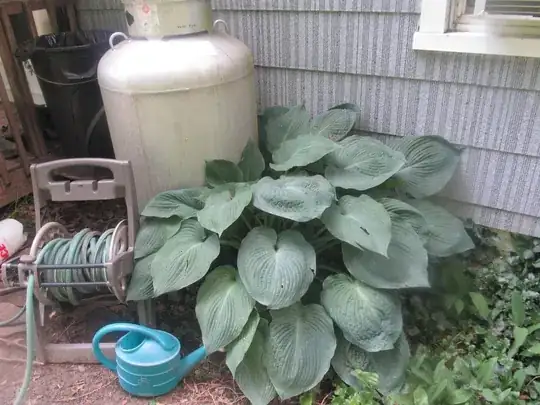I have some hostas myself, growing in partial shade; I water them whenever there is a long, dry spell and also feed them (they are in a light, sandy soil which is very free-draining and soon loses nutrients). Every so often, I divide the clumps in spring and, apart from some slug damage, they are all thriving, so, unfortunately, the advice below is not based on personal experience; however, judging from what I have read, I think the problem is likely to be caused by one of more of the following:
Planting/ re-planting too low in the soil.
Lack of essential nutrients in the soil; you say that it is fertile, but does it contain enough humus, and do you fertilize it from time to time?
Ineffective/superficial watering: hostas are moisture-loving plants; sometimes even a soaker hose will fail to supply them with enough in-depth water, and overhead watering is far more effective.
Insufficient light: although hostas prefer partial shade, clearly they need enough light to thrive; perhaps the area has become over-shaded...
There is some useful advice on hosta cultivation by the Royal Horticultural Society here.
UPDATE
Further to your comment below, the conditions you describe seem ideal for a hosta; and as it is not showing any signs of disease, the problem could be that your soil has become too acid, which often happens when soil is fertilized and manured for many years. It is worth doing a pH test using a pH meter (the ideal pH for hostas is 6.8-7.3) and, if your soil does prove too acid, you could lime it.
